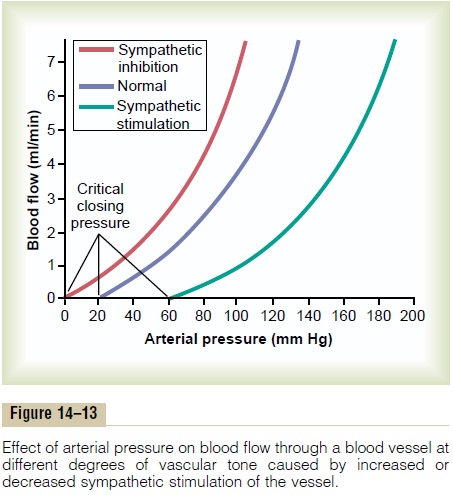Chapter: Medical Physiology: Overview of the Circulation; Medical Physics of Pressure, Flow, and Resistance
Effects of Pressure on Vascular Resistance and Tissue Blood Flow
Effects of Pressure on Vascular Resistance and Tissue Blood Flow
From the discussion thus far, one might expect an increase in arterial pressure to cause a proportionate increase in blood flow through the various tissues of the body. However, the effect of pressure on blood flow is greater than one would expect, as shown by the upward curving lines in Figure 14–13. The reason for this is that an increase in arterial pressure not only increases the force that pushes blood through the vessels but also distends the vessels at the same time, which decreases vascular resistance. Thus, greater pressure increases the flow in both of these ways. Therefore, for most tissues, blood flow at 100 mm Hg

Note also in Figure 14–13 the large changes in blood flow that can be caused by either increased or decreased sympathetic nerve stimulation of the peripheral blood vessels. Thus, as shown in the figure, inhibition of sympathetic activity greatly dilates thevessels and can increase the blood flow twofold or more. Conversely, very strong sympathetic stimulation can constrict the vessels so much that bloodflow occa-sionally decreases to as low as zero for a few seconds despite high arterial pressure.
Related Topics